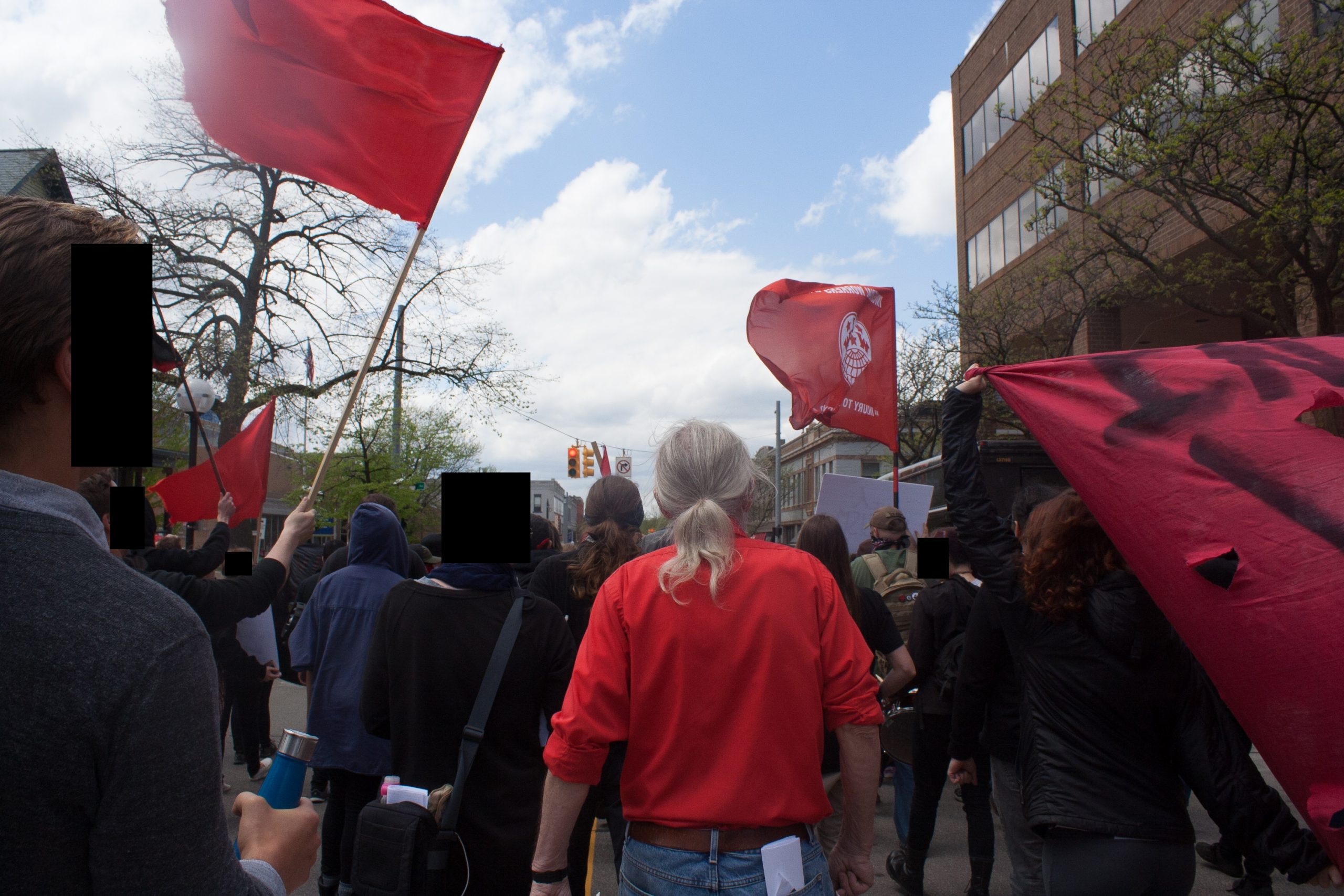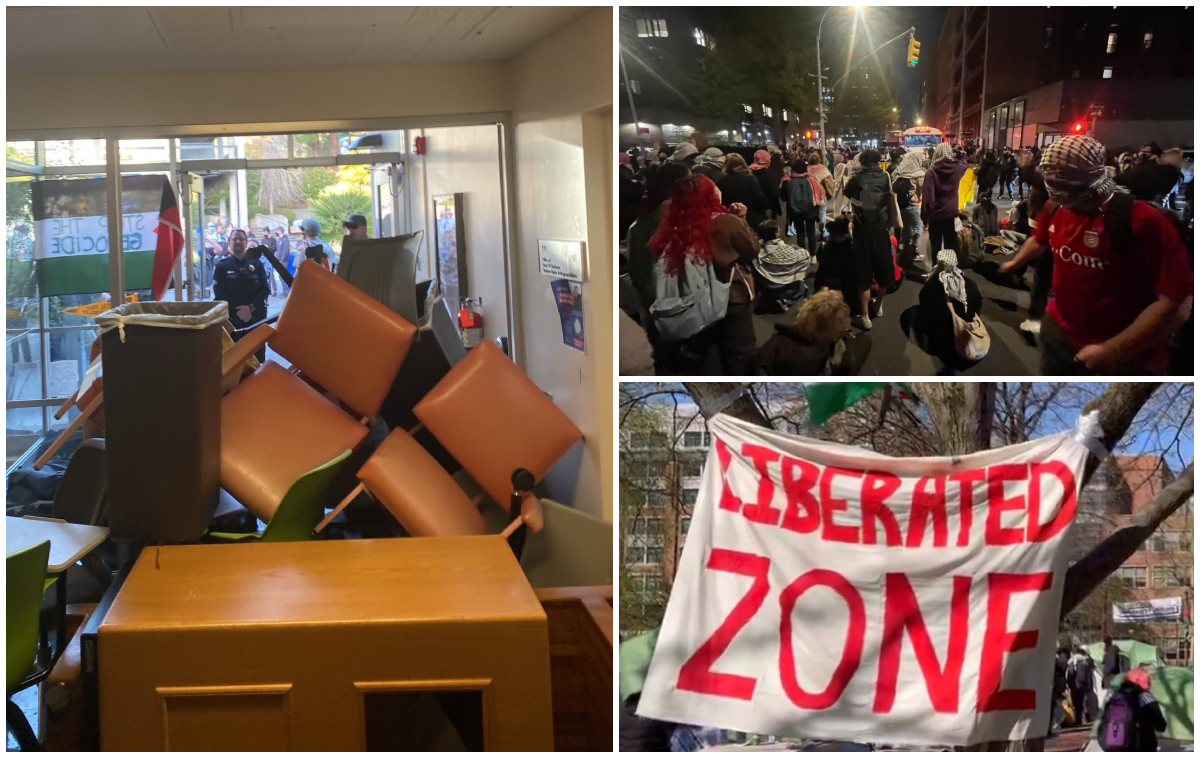Filed under: Action, Anarchist Movement, Featured, Midwest

Flowers blossom and, fitting the theme of spring, there seems to be a growing sense of mobilization as communities compost their old ideas. On May Day this year, Ann Arbor was host to a Festival of Resistance. Downtown, the streets were seized and the University of Michigan’s campus became a stage for radical demonstrations. While expressing support for oppressed and working people worldwide, the Festival sought to highlight the exploitative and repressive character of local capitalist and state institutions; notably the university.
The Festival, organized by a group of concerned community members, students, workers, and activists from Southeast Michigan, was intentionally coordinated without permission from the city or local police department, while the University was not contacted for any “permit” to occupy the campus commons. Excitement for the events spread in the month prior through flyering, a pop-up website, social media, and banner drops (including one from the rooftops downtown, and another over Interstate 94 the morning of).
The event began with a march throughout the streets featuring a stop at the local Chase bank. Entering the building, a small mass held space and spoke against JPMorgan Chase’s investment in oil pipelines and neocolonial repression of indigenous people. Though bank staff called the police, none of the Festival’s participants were arrested or otherwise detained.
Breaking at the Diag, a central pedestrian plaza on the school’s campus, marchers occupied and set up an Open University. The Open U consisted of a rotating schedule of free workshops, skillshares, talks, readings, and other collaborative and creative efforts including direct action trainings, radical history lectures, self-defense workshops, an introduction to anarchism, J20 Defense updates, as well as a number of ongoing stations (literature, prisoner letter-writing, a letterpress, mask-making). Students and passers-by who were unfamiliar with the holiday and the event stopped to learn and talk amidst the carnival atmosphere. Many spoke positively of their experiences with the Open University and its attendees. A community elder described the festival as the “best May Day event Ann Arbor has seen in decades.”
Following the Open University, a flood of black and red washed the streets in a roving block party during rush hour. Intersections became dance floors where experiments in commoning erupted through rhythmic step. There was such great gyration that the spirit of Emma Goldman may have joined the atmosphere. Throughout her travels, she frequented the area causing mischief while spreading tools of dissent. Today, 100 years later, a collection of her belongings is stored on the university’s campus.
“Beautification” efforts were conducted against select businesses and institutions around the city to leave messages highlighting their roles in racial domination and capitalist exploitation throughout Southeast Michigan and the so-called United States. Messages were left on the Univeristy buildings (“U of M Protects White Supremacists”, “UM Racists, U R Going Down”), the Justice Center (“AAPD Murdered Aura Rosser. We Will Never Forget”, “ICE, get the fuck out of our communities”), Chase Bank (“Pipelines = Colonial Murder”, “Chase Bankers have indigenous blood on their hands”) and Governor Snyder’s Main Street apartment (“Reparations for Flint”). The block party concluded at Liberty Plaza, where the crowd danced, chanted, and shared with one another visions of a world they’d like to fight for.
At least two cars aggressively drove through marchers during the street demonstrations, but no serious injuries were sustained. Despite the drivers’ obvious physical engagement and intent to harm the marchers, only one was stopped and subsequently released by police. At another point, a driver who was on their way to the hospital was promptly let through the march upon making their intent and concerns known.
Days like May First lead us to ask ourselves what our motivations are and what we strive for. We aren’t just the protests we participate in, nor the masks we wear on our faces. We’re complex, dynamic, and engaged participants in this struggle. These episodes are illustrations of how we can breath life into a living narrative. Direct action is how we take matters into our own hands, it’s our chance to become visible. It’s our message for change. We must do this for ourselves and our comrades. Our lives depend on it.
“It’s important to remember that Southeast Michigan has a long legacy of radicalism, even as we see the city of Ann Arbor and other communities being overtaken by high rents and bourgeois progressivism,” a participant and organizer stated. “We have not forgotten the history of this place. We haven’t forgotten the work of groups like the Black Berets and the White Panthers who organized against State repression and global capitalism in Ann Arbor in 1960s and 1970s.
“We also haven’t forgotten responsibility of the Ann Arbor Police for the murder of Aura Rosser on November 9, 2014, and made a public and explicit point of not only refusing to cooperate or interact with the police in any way in the organizing efforts leading up to the Festival, but also of openly condemning the actions of AAPD, and the existence of police more broadly in our actions the day of.
“It was also important for us to highlight the ways that the University plays an active role in making Ann Arbor unaffordable for many working folks, including the service people who keep the institution running. The University of Michigan is the largest employer in the state of Michigan and we wanted to send a message to them that we have not forgotten their history of dubious labor practices that have persisted into the present as our comrades in the graduate student union (GEO) recently fought tooth and nail for a fair contract. However, while our grievances with the university are many, we wanted to be careful not organize an event centered only around U of M. We wanted to make sure that this celebration focused on a broader understanding of labor, particularly the un-waged reproductive labor that May Day events have a tendency to overlook.”















